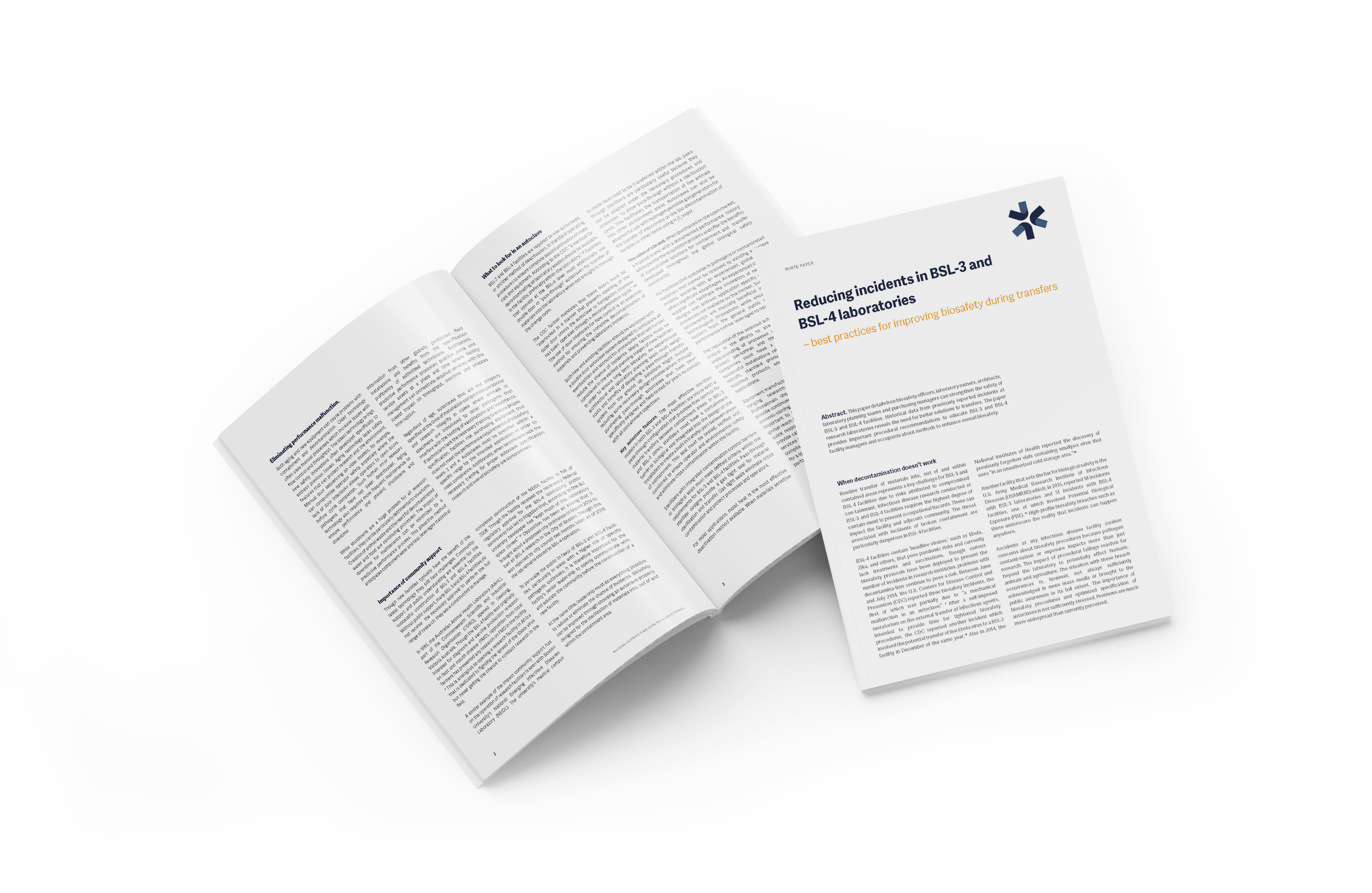Top 3 Causes of Cross Contamination in Biosafety Facilities
The recent string of incidents within CDC laboratories involving the accidental transfer of live anthrax into a lower level of containment highlights the importance of proper safety practices and well maintained equipment. Unlike cross contamination in other laboratories, which typically only leads to false-positives in scientific tests, contamination in BSL-3 or BSL-4 facilities has the potential to lead to a life-threatening epidemic.
Standard risk assessments have identified three main types of cross contamination that are specific to BSL-3 and BSL-4 facilities.
- Process interruption
- Seal leaks
- Improper material transfers
Understanding the potential for breach during common laboratory procedures can help facility managers more effectively guard against cross contamination in the BSL-3 and BSL-4 environment.
What Causes Contamination?
Many BSL-3 and BSL-4 facilities use autoclaves to decontaminate various research materials before disposal or transfer from one containment area to another.
Two common problems arise in facilities that have outdated or improperly maintained autoclave equipment. These problems can work in tandem with the main cause of cross contamination within biosafety facilities: material transfer.
1. Faulty Equipment: Process Interruption
Process interruption is one of the most common ways cross contamination can occur. If the autoclave cycle is not completed successfully or is insufficient for complete decontamination of the potential agents, then live strains may be allowed to transfer between areas of containment. This type of cross contamination is typically due to faulty or improperly maintained equipment. Cross contamination can also occur if autoclaves are not properly specified at installation. To meet decontamination needs for specific applications and compliance, autoclaves must meet the necessary criteria.
2. Improper Equipment: Seal Leaks
A second common area for cross contamination is a leaking seal. BSL-4 facilities are required to incorporate an integrated bioseal with their pass-through autoclaves. If this seal is insufficient for the materials being handled or has a leak, cross contamination between containment areas is possible.
3. The Main Issue: Material Transfers
Material transfers are by far the most common cause of cross contamination in biosafety facilities. Properly designed autoclaves in pass-through configurations have door interlocks which ensure proper material flow, allowing only a single door to be opened at a time and only after the complete decontamination cycle has taken place. If a faulty or outdated autoclave allows both doors to be opened at once, direct cross contamination between the two areas of containment is possible.
The Solution

When it comes to reducing the chance of cross contamination in biosafety facilities, knowing what to look for in an autoclave is an important factor. A recent whitepaper provides a detailed look at incorporating autoclaves into BSL-3 and BSL-4 facilities to improve biosafety.
